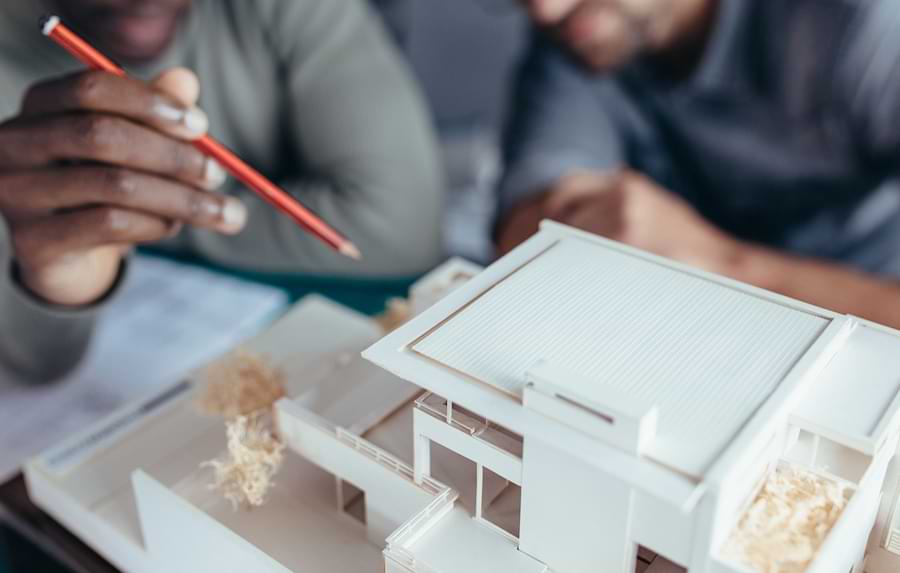Foam board is a material that you have probably seen, but may not have known or understood exactly what it was, its uses, and how versatile it is. So what is foam board?
Here’s the definitive description of what foam board is, along with what it’s used for. Starting with the quick answer.
Foam board or foam core board is a rigid, lightweight material that can be molded or fabricated into shapes and painted. Commonly used in architecture, design, costumes and props, mounting prints, displays, and picture frame backing. It consists of three layers that can easily be cut with a knife.
Well, that’s the simple summary. But let’s go on to describe exactly what foam board is, and other aspects.
Foam board types
There are many types of foam boards on the market, each best suited to certain needs. Some of the common types of foam board include:
- Self-adhesive
- Heat-activated
- Modeling board
- Digital print
- Bright white
- Heavy-duty
- Smooth
Aside from these, foam board types, like other types of foam also differ based on one of two finishes: matte or glossy.
Matte-finished foam boards – are resistant to fingerprints and glare-free. However, glossy finished foam boards are highly prone to fingerprints and glare – but can resist moisture, unlike a matte finished foam board. Matte-finished foam boards are used for professional low-contrast and low-saturation images. Here’s a selection of matte foam boards.
Glossy finished foam boards – provide a soft, sleek, and subdued look. Glossy finished foam boards are used for high-contrast and high-saturation images. They offer a more eye-catching and aesthetically pleasing appearance. Uses include movie props, advertising boards, and marketing posters. Here’s a selection of glossy foam boards.

Foam board uses
Foamboard belongs to the family of graphic artboards. It can be mounted, printed, and laminated. It’s used for different display purposes and comes in a variety of thicknesses, sizes, and densities.
It is often the choice of material for model makers, designers, prop specialists, and more, as it provides an excellent array of applications that require rigidity, yet is a lightweight and versatile material that can be accurately cut, molded, and fabricated, as well as painted.
Foam boards are commonly used for displays at trade shows and presentations, architectural models, and structures.
Some also use foam board signs in events or to display sales in fairs. As they can be easily formed into shapes. Foam boards are often used for interior design, costume and film prop design, and art.
They’re also increasingly used for mounting prints and photographs and as backing in picture frames.
Other foam board uses:
- Menu boards
- School exhibitions
- Portable signage
- Notices
- Advertising boards
- Science fair
- Research projects
- Aisle markers
- Photo exhibits and galleries
- Lobby decoration
This is not an exhaustive list. Foam board has a multitude of uses, including insulation, for example.
Types of foam boards also vary not only in materials but based on their size and thickness. Below is a breakdown of different foam board sizes and thicknesses:
Foam board thicknesses:
- 0.04” and 0.08” (1 and 2mm) – These two thicknesses make it easy to cut a foam board, which can then be hung just using staplers or other light fixings. This thickness is often used by exhibitors and professional photographers to mount pictures on walls or for galleries.
- 0.12” (3mm) – This thickness is considered best for mood boards and professional presentations. Nowadays 3mm foam boards are becoming increasingly popular among interior stylists and designers for mood boards. This thickness also makes it perfect to create attractive displays.
- 1/8” (5mm) – This is a common thickness foam board generally comes in. It comes in A3 size, and can go up to around 40” x 55” (100 x 140 cm). This thickness is widely used for presentations, map printing, infographics, special pictures, or decorative purposes.
- 0.4” (10mm) – This thickness is often opted to cover large areas or surfaces. It provides more structure and rigidity and is less likely to bend. Foam board with this thickness is used for exhibition stands, theatre performances, and photoshoots.
Foam board for architect purposes
when it comes to scaled models commonly used by architects, there are two main sizes adopted.
The two basic foam board sizes for scaled models are 3mm and 5mm (0.12 and 1/8”). Ideal for both the base and main structures. The thinner of the two mostly represents walls. Along with light materials like perspex. Foam boards of 1-2mm are often used as roofs, perimeter walls, and fencing.

Foam board general sizes:
- 8 x 10” – This size is often opted to print pictures
- 16 x 20” – This is the standard size for a medium poster. This size is often used for printing for-sale signs and for sales-related displays.
- 18 x 24” – This size is commonly used for large advertising boards in subways and bus shelters.
- 24 x 36″ – This is the standard size for a large poster. This size is often used by shopping malls for displays on metal stands and movie posters.
How foam board is made

Foam boards are generally made up of three layers: an inner layer of polystyrene or polyurethane foam cladding with an outer facing each side of adhesive paper, a cotton archival paper, a white clay coated paper, or a common brown kraft paper.
Some other foam board types have a rigid plastic coating or solid styrene-type core. They’re often used for signboards or other uses which require greater rigidity.
There are also foam boards made with aluminum outer layers to support the mounting of high-gloss photographic prints and some are made with fire-retardants for specific purposes such as in museums.
These days, there are many different materials that are used to make foam boards, depending on specific purposes.
For example, a standard coated foam board accommodates different types of paint and glues like superglue. And in some cases, some solvents in paints and glues can dissolve in the foam and cause damage, eventually breaking down the structure or rigidity.
So be sure to get a foam board that’s made out of the correct materials to withstand the purpose of your usage.
Other foam board questions: answered
Let’s go over a few of the common questions asked regarding foam boards. Similar to my question and answer article on memory foam.
Can you print directly onto foam board?
Printing onto foam board can be achieved with white ink, clear varnish, and a printable primer coat. Or just use acrylic paint for many types. Some flatbed printers can print directly onto thinner foam boards. If you need it printed on thicker sheets, consider gluing sheets together after printing.
Is craft board the same as foam board?
In general yes, a craft board (kraft board) generally has a lightweight matte surface with a white foam core but surfaces can vary depending on the required use. Unlike foam board which is foam covered with lightweight paper stock. This applies in the US, the UK, Canada, and Australia.
Is foam board waterproof?
Foam board insulation does not absorb water, so limits moisture issues, but avoid expanded polystyrene foam boards (EPS). Polyiso and extruded polystyrene foam boards have the highest waterproof rating. Craft foam board with a paper-based cover is not waterproof. Plastic outer coatings are waterproof.
Is foam board acid-free?
Professional framers, artists, photographers, and crafters who might be concerned about preserving their work can opt to use acid-free foam board. With an acid-free surface, any mounted work is protected from acid erosion. Elmer’s acid-free boards are ideal for this purpose.
You can obtain Elmer’s acid-free foam boards easily and directly from amazon.
To finish
I hope this has provided some help for you concerning the question of “what is foam board” and much more. Be sure to check out my other articles for more foam help!
